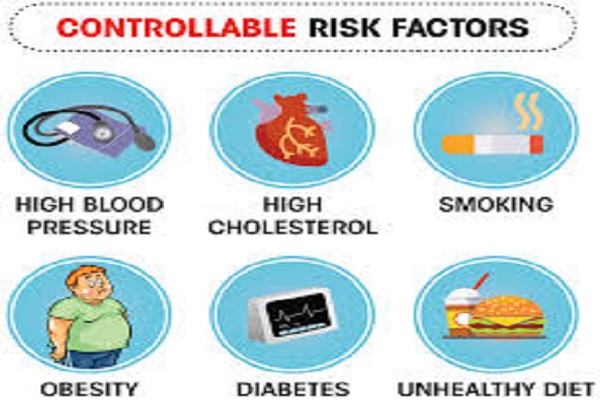Strokes can be fatal, but the risk can be reduced. Many stroke risk factors are lifestyle related, so everyone has the power to reduce their risk of having a stroke.
Some things about yourself that you can change, some things you can’t. For example, you can’t change the fact that you may have inherited your mother’s brown eyes or your father’s dimples. Or that you will always have some risk factors for stroke, such as:

Risk factors that can’t be changed
Being over the age of 55
Age is the main risk factors for the condition - which is why strokes and heart attacks tend to happen in older people.
Male gender
Men have a greater risk of brain attack than women do, and men have attacks earlier in life.
Heredity (including race)
- Family history of stroke
- Previous stroke or trans-ischemic attack (TIA)
- Being African-American or Hispanic
However, you can change other things about yourself, such hair color or weight. And you also have some influence over other risk factors for stroke that may result from lifestyle choices. Read the tips below to help you control these risk factors and potentially prevent a stroke.

Major risk factors you can modify, treat or control
Manage blood pressure, cholesterol and diabetes
Blood pressure should be checked every one to two years, especially if hypertension runs in your family. Ideally, blood pressure should be below 140/90 mmHg because elevated pressure can damage blood vessels. Too much cholesterol can cause plaque buildup in the inner walls of the arteries, eventually reducing blood flow or forming blood clots. Adults should have their cholesterol checked every five years or more often if they are being treated for high cholesterol. Diabetes needs your blood sugar to be regularly measured and managed using a glucometer to prevent blood vessel damage throughout the body.
Stop smoking
Cigarette smoke contains nicotine and carbon monoxide that can damage the cardiovascular system by narrowing blood vessels and causing blood clots.
Eat right
Eat a variety of foods from all food groups, but limit the amount of saturated fat, trans fat, cholesterol and sodium. Smart food choices include plenty of fruits and vegetables that are high in vitamins, minerals and fiber, as well as unrefined whole-grain foods that have lots of fiber. Aim for at least five servings a day of fruits and vegetables, and select fat-free, one percent fat or low-fat dairy products.
Maintain a healthy weight
Being overweight may cause the body to turn excess fat and cholesterol into plaque in the blood vessels that can reduce blood flow to the brain. Additional weight also can make the heart work harder and increase blood pressure. Shedding even a few pounds can help lower blood pressure and improve cholesterol levels.
Start moving
Exercise at least 30 minutes a day on most or all days. Regular physical activity burns calories and sheds extra pounds while helping the heart and blood vessels work better. Always check with your doctor before starting a new exercise program.
Limit alcohol intake
Men can have up to two drinks a day, while it is better for women to have just one. Too much alcohol can be detrimental to your health because it can increase blood pressure, add empty calories to your diet and raise cholesterol levels.
Other factors that contribute to stroke risk
Stress
Individual response to stress may be a contributing factor for stroke. Some scientists have noted a relationship between coronary heart disease risk and stress in a person’s life, along with their health behaviors and socioeconomic status. More about: Additional Factors That May Be Linked to Higher Stroke Risks
You may not like your widow’s peak or attached ear lobes, but you will like the fact that you can reduce some risk factors of stroke. For more information about stroke risk factors, prevention, symptoms and treatment, visit the City International Hospital website.











